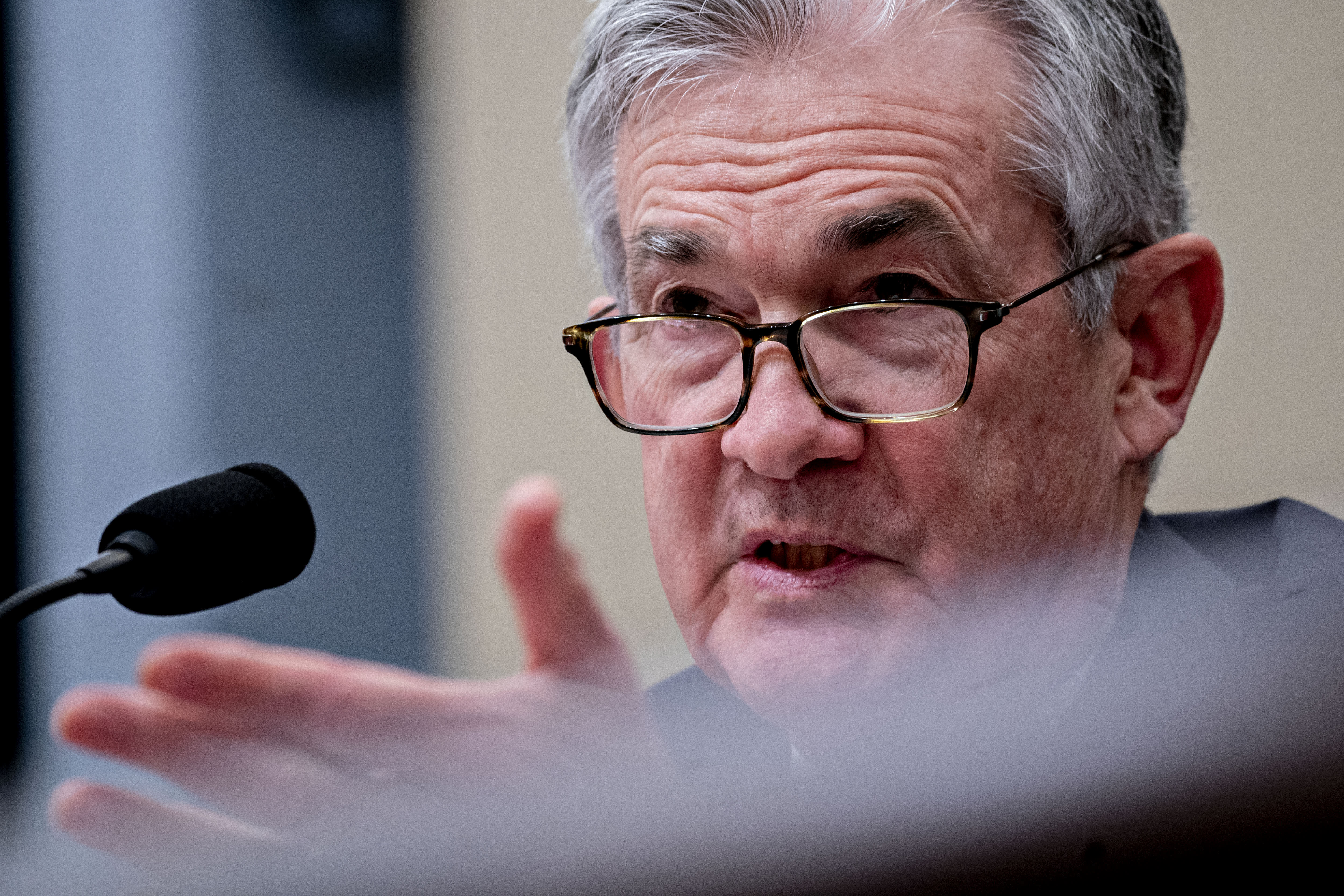Jerome Powell, chairman of the U.S. Federal Reserve, speaks during a House Budget Committee hearing in Washington, D.C., U.S., on Thursday, Nov. 14, 2019.
Andrew Harrer | Bloomberg | Getty Images
The Federal Reserve’s move into the next phase of its corporate bond buying is generating renewed concerns over potential asset bubbles.
In the latest leg of its effort to keep markets functioning, the central bank said last week it will expand its purchases of exchange-traded funds into individual issuance of company debt.
While the initial announcement of the program provided a major lift to Wall Street, there now are worries that the risk-on sentiment could be getting carried away.
“The Fed’s shock-and-awe campaign worked amazingly well,” Yardeni Research founder Ed Yardeni said in his daily market note Monday. “This raises the question of whether Fed really needs to do much more.”
Indeed, the mere pronouncement on March 23 that the Fed would establish two credit facilities – one for newly issued bonds and leveraged loans and another for those already on the market and tracked through ETFs – helped assuage a market that had locked up amid cononavirus fears.
The worries are that the market has now gone too far as interest rates linger around record lows and issuers count on perpetual Fed support should buyer appetite wane.
“The goal was to restore liquidity to the credit markets,” Yardeni said. “They are clearly functioning well again. If the Fed persists in flooding the markets with liquidity, the risk is that the Fed will create the greatest financial bubble of all times.”
Rushing to market
Issuance so far already has topped $1 trillion and is likely to come close to doubling the 2019 total even if the pace slows through the rest of the year, according to Citigroup.
That’s come even though the Fed’s actual purchases have been tepid.
Buying so far has totaled just over $7 billion in a $6.7 trillion market. In all, the Fed intends to buy no more than $750 billion in a program that is scheduled to expire in late September.
Still, the boost in total issuance is raising the specter of broader danger should the economic recovery from the coronavirus depths move more slowly than anticipated.
“In part, the rise in corporate debt is a healthy development as it represents firms drawing on credit lines, government loan schemes, and other sources to get through a cash flow deficit resulting from lockdowns and social distancing,” wrote Adam Slater, lead economist at Oxford Economics. “But as we have previously warned, the rise in debt could bring considerable risks, especially if economic recovery proves slow and patchy.”
The increasing amount of “zombie” companies whose revenues don’t cover their debt service costs dovetail with the bubble fears. The companies with a ratio below 1 of their earnings before interest and taxes divided by their interest expenses of below 1 — what economists call the “interest coverage ratio — has doubled to 32% during the crisis, according to Oxford.
At the same time, the S&P 500 is trading at 21.9 times expected earnings over the next 12 months. That’s the highest in at least 18 years and nearing the record 24.4 on March 24, 2000 as the dotcom bubble was set to implode, according to FactSet.
Fed Chairman Jerome Powell has expressed some concern over asset valuations and even more over corporate indebtedness. However, he told a Senate panel last week that one of the prime reasons the Fed followed through from its March 23 declaration was simply that it had to keep a promise. He pledged that the Fed does not want to “run through the bond market like an elephant.”
The announcement that the Fed would be buying individual bonds did, in fact, pushed a stock market rally a week ago. But there are fault lines showing in the riskier sides of financial markets.
Bond defaults this year have totaled 109, including 18 in the energy sector where the largest number of zombie corporations are clustered — the sector saw just 20 defaults in all of 2019, according to S&P Global Ratings.
At the same time, it is buying, through ETFs, the debt of big companies like Microsoft, CVS and Goldman Sachs that have strong credit profiles.
But it also is in part targeting corporate “fallen angels” whose debt was around the bottom of investment grade before the pandemic but then fell to junk and is in danger of defaulting. Energy is the leading component of this group, followed by telecom and health care.
“It’s hard to understand why the Fed feels obliged to support both the buyers and the sellers of these dodgy bonds since they all well understood the riskiness of owning and issuing BBB-rated debt,” Yardeni said. “The Fed is stoking moral hazard.”
